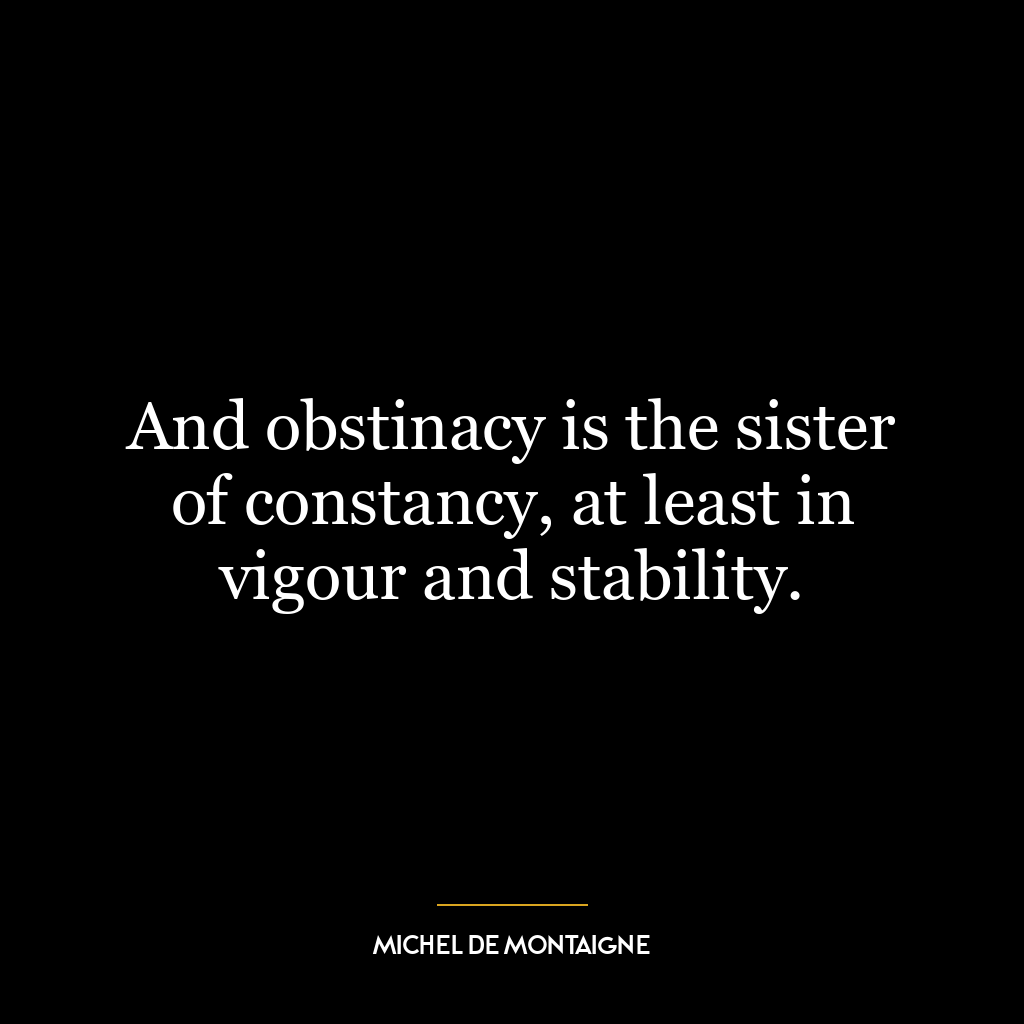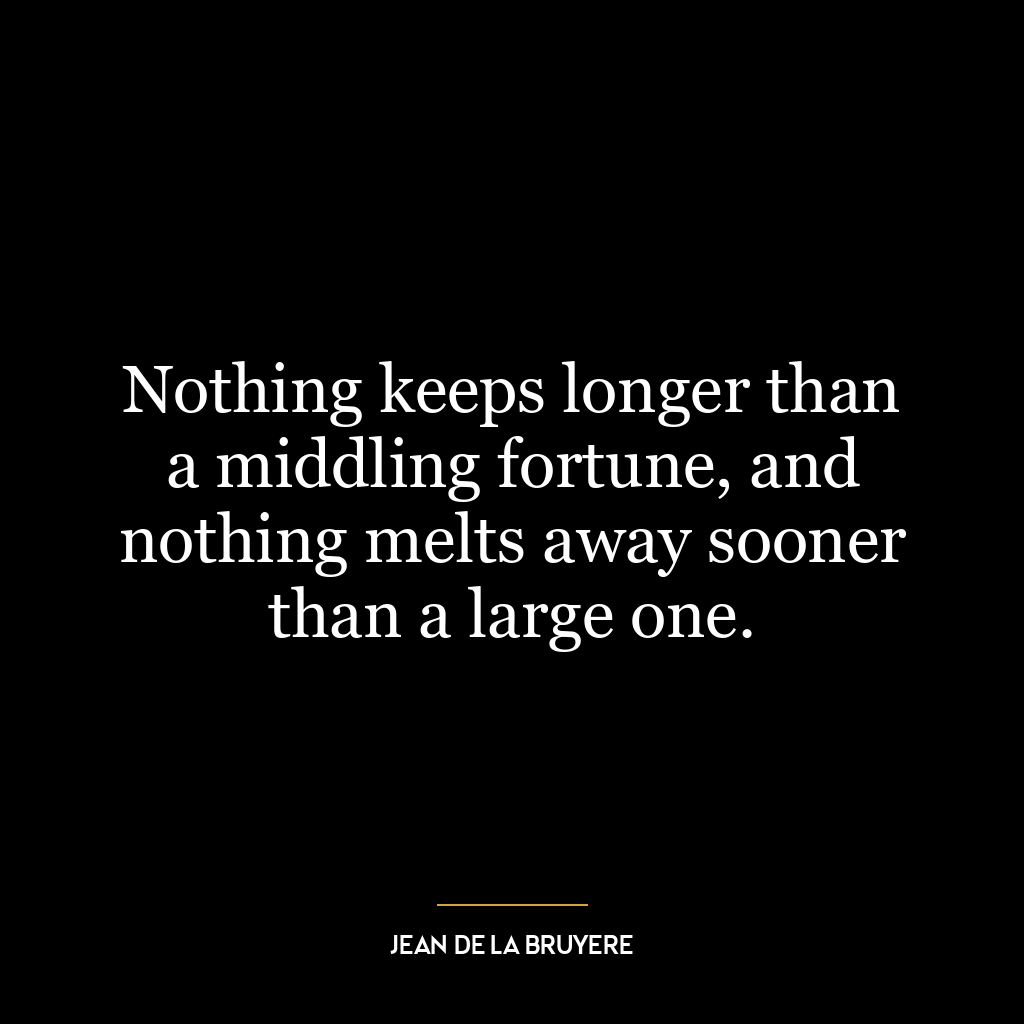And obstinacy is the sister of constancy, at least in vigour and stability.
This quote suggests that obstinacy, or stubbornness, shares a close relationship with constancy, which refers to the quality of being faithful and dependable. The connection is in their shared characteristics of vigour and stability. Both obstinacy and constancy exhibit a form of resistance to change – whether it’s sticking firmly to one’s opinions in the face of opposition (obstinacy) or remaining loyal and steadfast (constancy).
In other words, both traits represent a certain strength or intensity (vigour) and steadiness (stability). While one is often viewed negatively (obstinacy), the other is generally seen as positive (constancy). Yet they are two sides of the same coin.
The application of this idea can be seen in personal development today. For instance, someone who is working towards a goal can use this concept to navigate between being steadfast in their pursuit without becoming overly stubborn or rigid. It’s about finding balance – maintaining determination without closing oneself off from potential opportunities for growth.
In today’s world where change is constant, understanding this quote can help us realize that while it’s important to be consistent and reliable – qualities associated with constancy – we must also avoid becoming too inflexible or rigid – characteristics linked with obstinacy. This balance allows us not only to stay true to our goals but also adapt when necessary for our overall growth.
Furthering on this point on a societal level: leaders who embody constancy provide stability and trustworthiness; however, if they lean too much into obstinacy they risk alienating others through their refusal to consider different perspectives or adapt to changing circumstances.
Therefore, recognizing that these traits are closely linked yet distinct can allow individuals and societies alike better navigate challenges by fostering resilience while avoiding rigidity.















